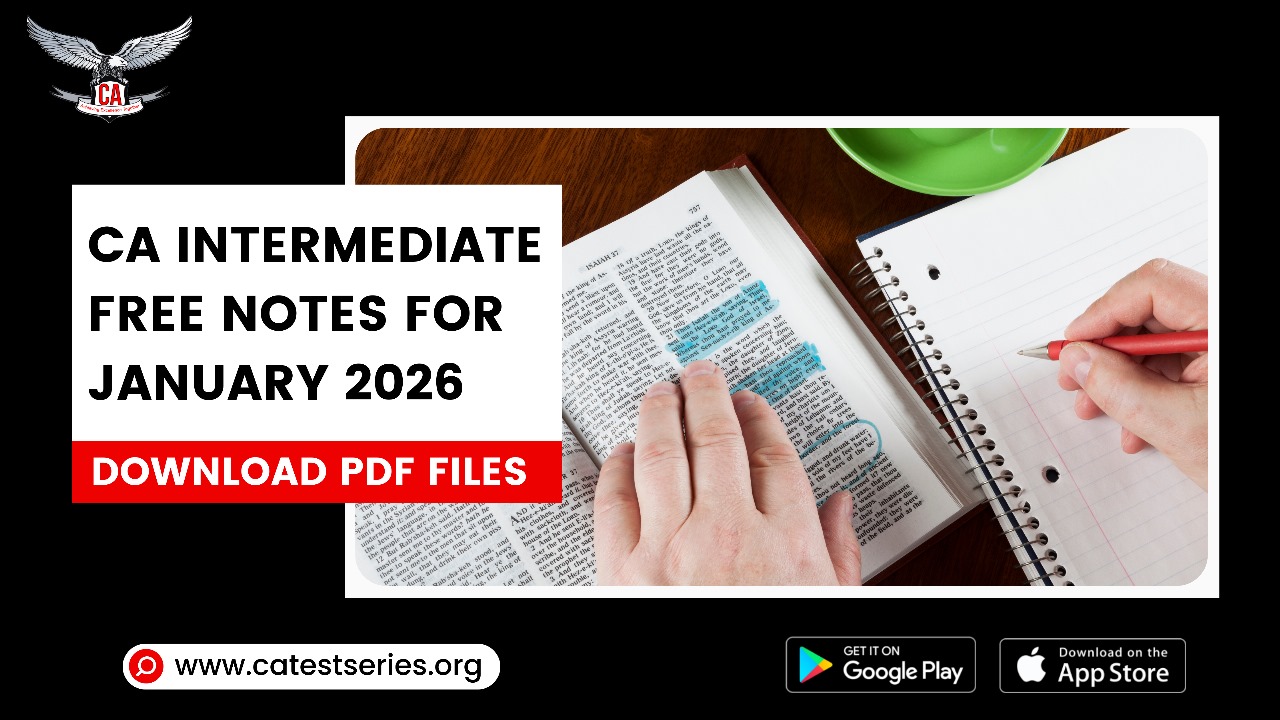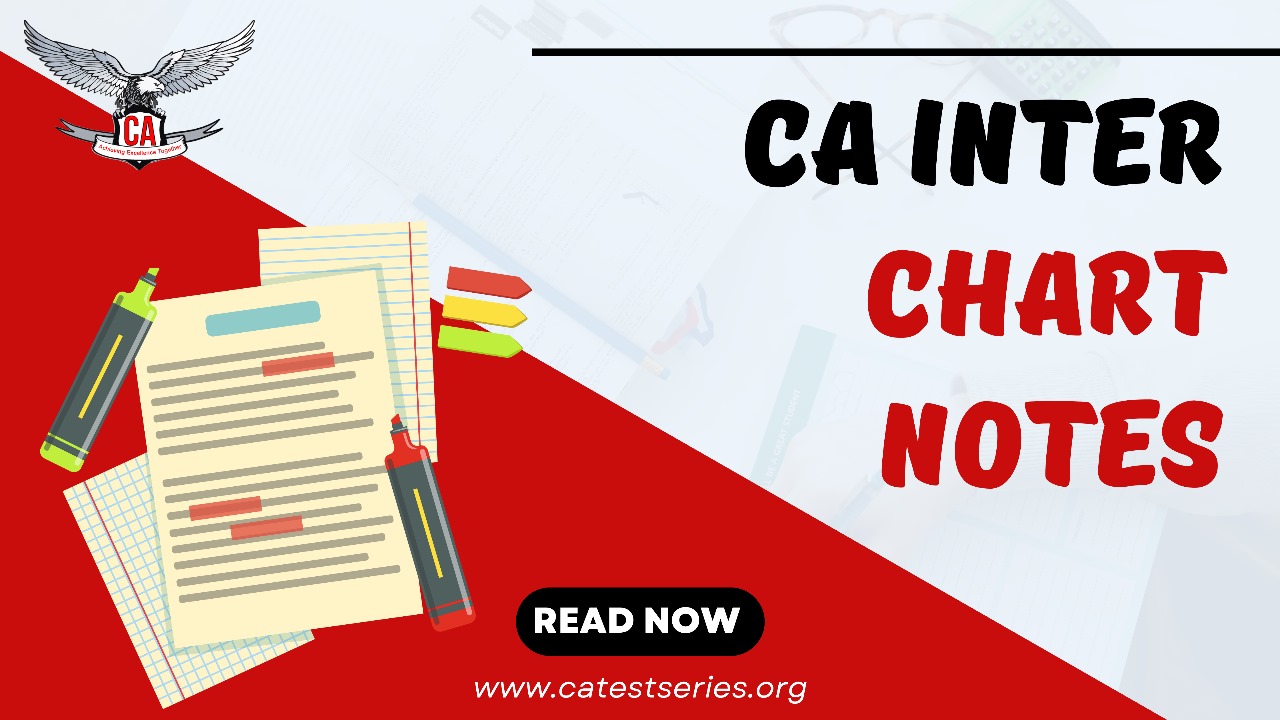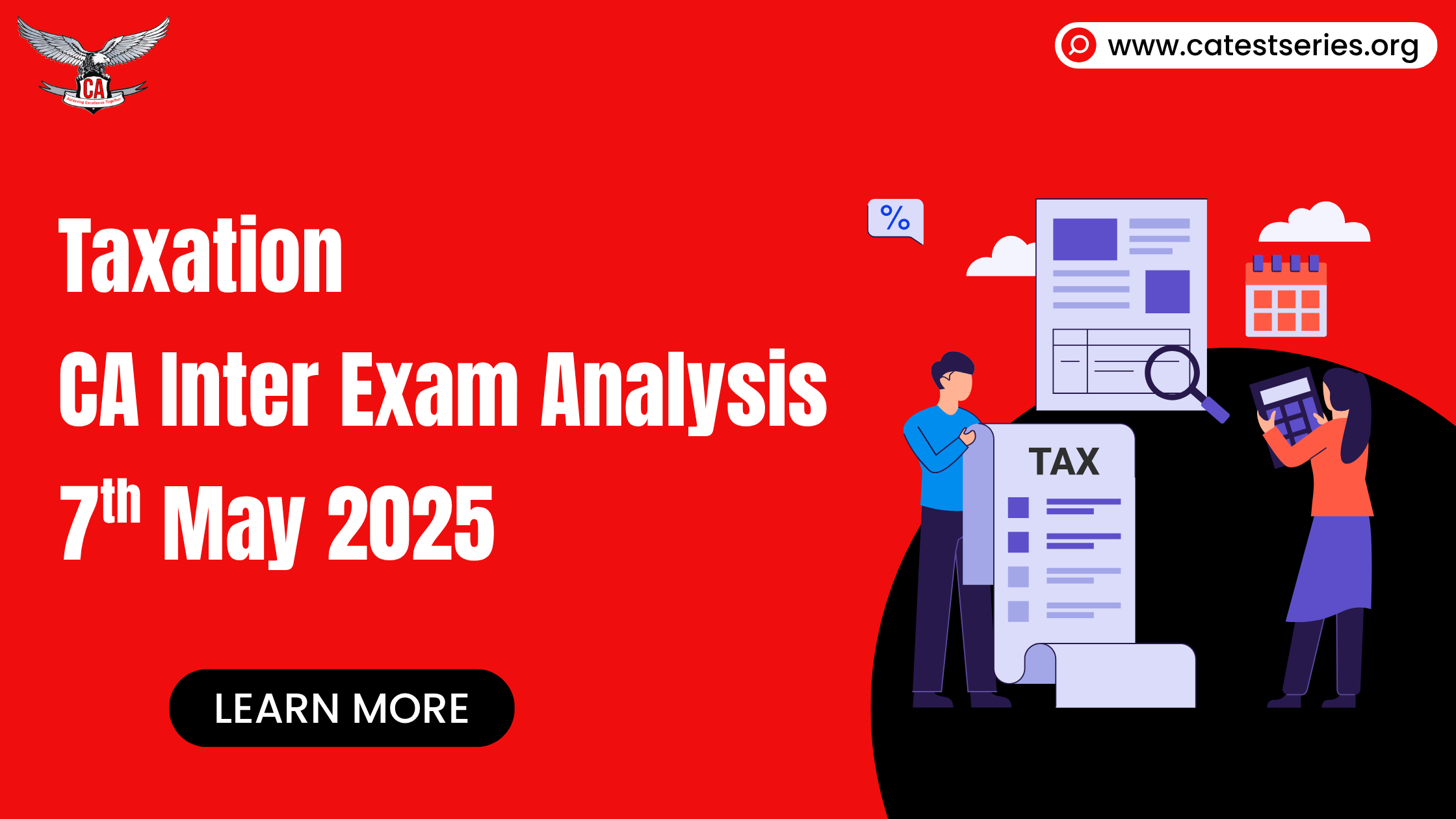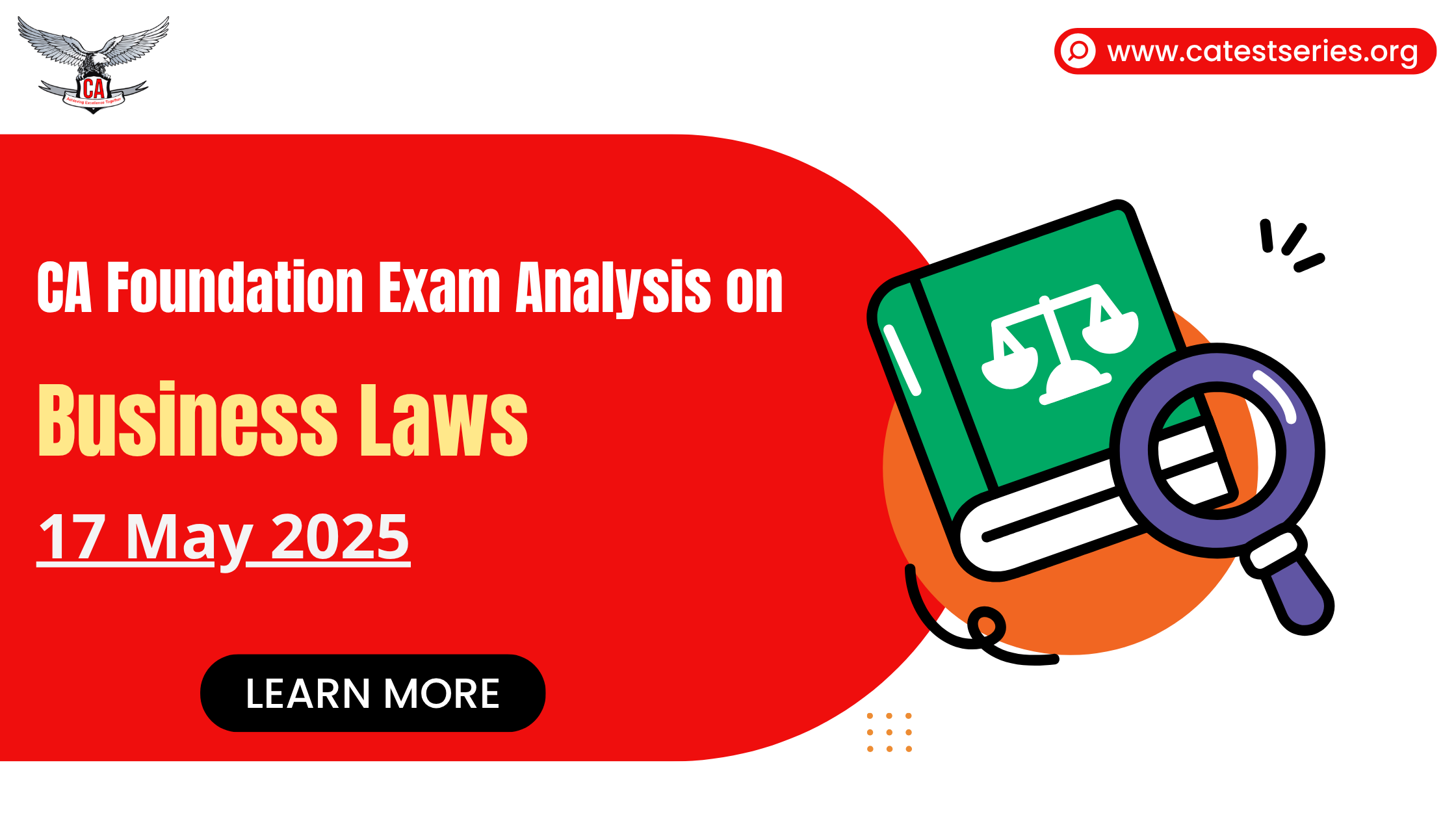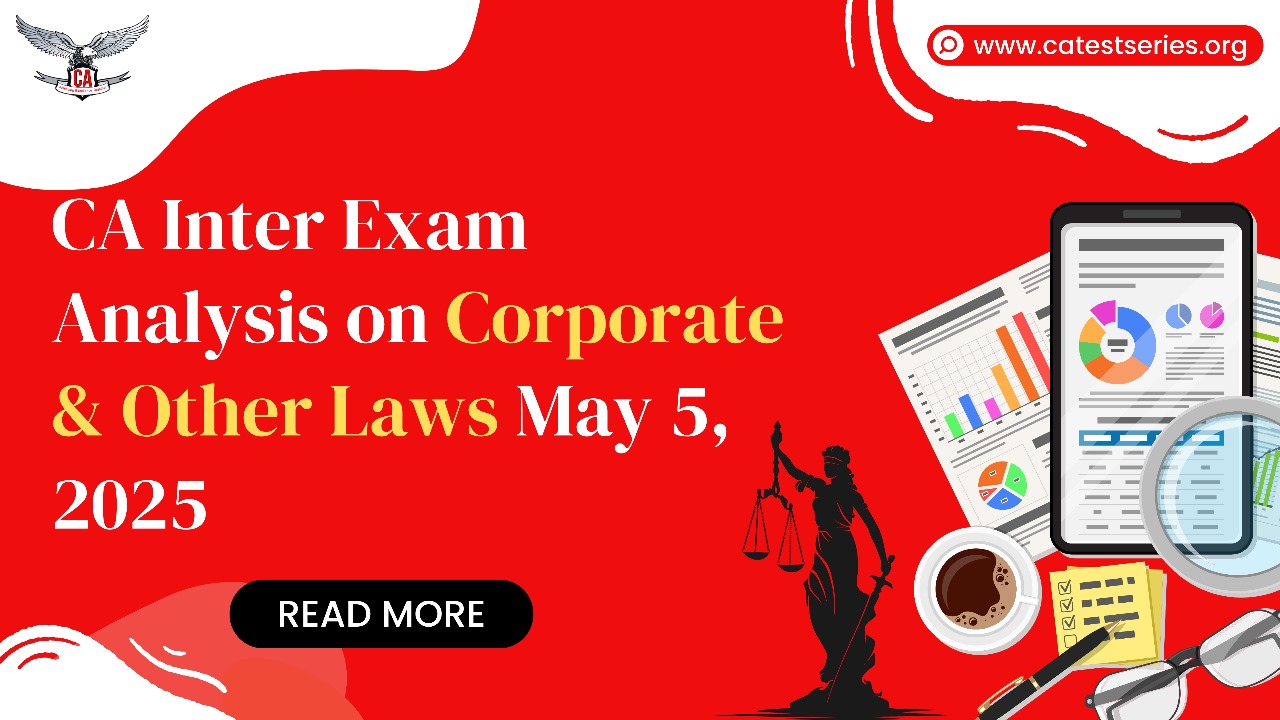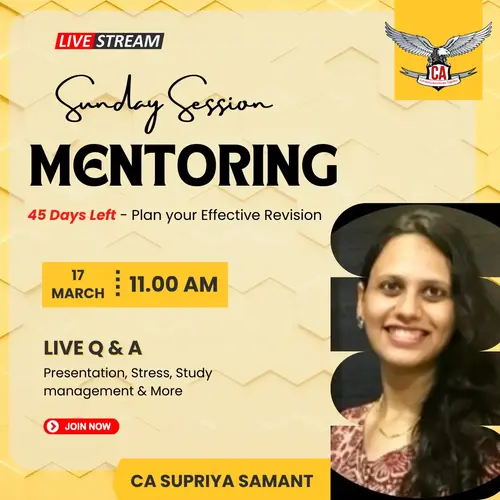CA Foundation Chapterwise Analysis and Weightage for 2026 ICAI Exams
There are four subjects in the CA Foundation Syllabus, the chapters and their contents are covered below:
PAPER 1: PRINCIPLES AND PRACTICE OF ACCOUNTING
Chapter | Unit | Name of the Topic | Weightage | Contents |
1
| Theoretical Framework | |||
1 | Meaning and Scope of Accounting | 5% - 10% | This chapter helps to understand the meaning and significance of accounting. It explains sub-fields of accounting, relationship of accounting with other subjects and the limitations of accounting. | |
2 | Accounting Concepts, Principles and Conventions | This chapter introduces the concepts of entity, periodicity, matching, cost, dual aspect, materiality, money measurement, accrual, going concern, realization, conservatism and fundamental accounting assumptions of going concern, consistency and accrual. | ||
3 | Accounting Terminology – Glossary | The basic accounting terms are defined in this chapter. | ||
4 | Capital and Revenue Expenditures and Receipts | In this chapter, the criteria for identifying capital and revenue expenditure is explained along with its distinction. | ||
5 | Contingent Assets and Contingent Liabilities | The meaning of Contingent Assets Contingent Liabilities and Provisions along with its distinction is explained in this chapter. | ||
6 | Accounting Policies | Meaning of different accounting Policies is explained. | ||
7 | Accounting as a Measurement Discipline – Valuation Principles, Accounting Estimates | Meaning of measurement and its basic elements like historical cost, realizable value and present value, difference between measurement and valuation is covered in this chapter. | ||
8 | Accounting Standards | Significance, Objectives, Benefits and Limitations of Accounting Standards explained in this chapter. | ||
9 | Indian Accounting Standards | Significance and need of issuance of Indian Accounting Standards is covered in this chapter. | ||
2 | Accounting Process | |||
1 | Basic Accounting Procedures – Journal Entries | 25% - 30% | Meaning and Significance of double entry system, Types of Accounts, Determination of Debits and Credits and Recording Journal Entries is covered in this chapter. | |
2 | Ledgers | Concept of Ledgers and technique of ledger posting is covered in this chapter. | ||
3 | Trial Balance | Preparation of Trial Balance and its importance is discussed in the chapter. | ||
4 | Subsidiary Books | Techniques of recording transactions in Purchase Book, Sales Book, Returns Inward Book and Returns Outward Book; Bills Receivable and Bills Payable Book are covered in this chapter. | ||
5 | Cash Book | Kinds of Cash Book, Preparing three column cash book, Concept of Petty Cash Book is covered in this chapter. | ||
6 | Rectification of Errors | Types of errors, one sided and two sided errors, concept of suspense book is covered in this chapter. | ||
3 |
| Bank Reconciliation Statement | Preparation of Bank Reconciliation Statement, difference between pass book and cash book is explained in this chapter. | |
4 |
| Inventories | Meaning and Methods of Inventory Valuation like FIFO, LIFO, Specific Identification Method, weighted average Method, Adjusted Selling Price Methods are covered in the chapter. | |
5 |
| Concept and Accounting of Depreciation | Meaning and nature of depreciation, Methods of depreciation, its advantages and disadvantages are covered in this chapter. | |
6 | Accounting for Special Transactions | |||
1 | Bill of Exchange and Promissory Notes | 15% - 20% | Accounting treatments relating to issue, acceptance, discounting, maturity and endorsement of bills, accommodation bills, special cases of insolvency and early retirement of bill are covered in this chapter. | |
2 | Sale of Goods on Approval or Return Basis | Accounting treatment of sales on approval or return basis is covered in this chapter. | ||
3 | Consignment | Difference between sale and consignment, accounting treatment for consignment transactions, distinction between various types of commissions is covered in this chapter. | ||
4 | Average Due Date | Calculation of average due dates, days of grace, maturity period, etc. covered in this chapter. | ||
5 | Account Current | Methods of Preparation of Account Current & its calculations are covered in the chapter. | ||
7 | Preparation of Final Accounts of Sole Proprietors | |||
1 | Final Accounts of Non-Manufacturing Entities | 30% - 40% | Final Accounts preparation of non-manufacturing entities including Trading Account, Profit and Loss Account and Balance Sheet. | |
2 | Final Accounts of Manufacturing Entities | Final Accounts preparation of manufacturing entities including Manufacturing Account, Profit and Loss Account and Balance Sheet. | ||
8 | Partnership Accounts | |||
1 | Introduction to Partnership Accounts | Profit & Loss Appropriation Account, two methods of Partners Capital Account -fixed and fluctuating, Rectification of errors, etc. is covered in the chapter along with provisions of Indian Partnership Act, 1932 and the Limited Liability Partnership Act, 2008. | ||
2 | Treatment of Goodwill in Partnership Accounts | This chapter covers Accounting of goodwill in case of Change in Profit Sharing Ratio, Admission of Partner, Retirement or death of partner, when business is dissolved or sold. | ||
3 | Admission of a New Partner | Accounting treatment in case of admission of new partner, Revaluation of Assets and Re computation of liabilities, treatment of reserves, Calculation of New Profit-Sharing Ratio is covered in this chapter. | ||
4 | Retirement of a Partner | Accounting treatment in case of retirement of partner, Computation of Gaining Ratio, Revaluation of Assets & Liabilities, Joint Life Policy are few of the concepts covered over here. | ||
5 | Death of Partner | Accounting treatment in case of death of partner, Joint Life Policy, etc. is covered in this chapter. | ||
9 |
| Financial Statements of Not-for-Profit Organizations | Preparation of Receipts and Payments Account, Income and Expenditure Account, Balance Sheet of Not-for-Profit Organizations. | |
10 | Company Accounts | |||
1 | Introduction to Company Accounts | 10% - 15% | Nature and Types of Companies, Salient Features of Company, Purpose of Preparing Financial Statements of Company are covered in this chapter. | |
2 | Issue, Forfeiture and Re-Issue of Shares | Types of Shares and Share Capital, Accounting treatment in case of under subscription, over subscription of shares, call-in-arrears, call-in-advance, forfeiture of shares, re-issue of shares, treatment of shares issued for consideration other than cash are the things covered in this chapter. | ||
3 | Issue of Debentures | Types of Debentures, Accounting for Issue of Debentures, write off discount on debentures, interest on debentures calculation is covered in this chapter. | ||
PAPER 2: BUSINESS LAWS AND BUSINESS CORRESPONDENCE AND REPORTING
Chapter | Unit | Name of the Topic | Weightage | Contents | |
SECTION A: BUSINESS LAWS | |||||
1 |
| The Indian Contract Act, 1872 | |||
1 | Nature of Contracts | 25% - 35% | Meaning of Agreement and Contract, Essential elements of Contract, Types of Contract, Concept of Offer and Acceptance and Rules of Communication and Revocation are covered in this chapter. | ||
2 | Consideration | Meaning & Definition of Consideration, Legal rules regarding valid consideration, Rule of No Consideration, No Contract, Doctrine of Privity of Contract with exceptions are covered in this unit. | |||
3 | Other Essential Elements of Contract | Capacity to Contract, Contracts with minor, Consensus ad idem, Free Consent, Lawful Consideration & Object, Agreements opposed to public policy are the concepts covered in this unit. | |||
4 | Performance of Contract | Various Modes of Performance of Contract, Refusal of Performance and its consequences, rights of joint promises, liabilities of joint promisors, rules regarding appropriation of payments are mentioned in this unit. | |||
5 | Breach of Contract and its Remedies | Various modes of breach of contract and the measurement of damages is covered in this chapter. | |||
6 | Contingent and Quasi Contracts | Characteristics and Differences between Contingent and Quasi Contracts, Rights and Obligations of Parties to the contracts are covered in the chapter. | |||
2 |
| The Sale of Goods Act, 1930 | |||
1 | Formation of the Contract of Sale | 20% - 25% | Scope, Definitions, Meaning, Formalities, Subject Matter, Ascertainment of Price for Contract of Sale is mentioned in this unit. | ||
2 | Conditions & Warranties | Stipulation as to time, conditions and warranties in contract of sale, implied conditions and warranties, doctrine of caveat emptor is covered in this unit. | |||
3 | Transfer of Ownership and Delivery of Goods | Passing of Property, Passing of Title, Delivery & Acceptance of Goods, Rule of Nemo DatQuod Non Habet are covered in this unit. | |||
4 | Unpaid Seller | The concept, rights of unpaid seller, difference between right of lien and right of stoppage in transit, right of parties in case of breach of contract, sale by auction are covered in this chapter. | |||
3 |
| The Indian Partnership Act, 1932 | |||
1 | General Nature of a Partnership | 20% - 25% | Concept and Essentials of Partnership, Principal – Agent relationship, difference between partnership and other various forms of organization is covered in this chapter. | ||
2 | Relations of Partners | Relations of Partners Interest and relations with third parties, Implied Authority of Partner, Legal consequences of partners coming in and going out are covered in this chapter. | |||
3 | Registration and Dissolution of a Firm | Mode of effecting registration, consequences of non-registration and dissolution of firm is covered in this chapter. | |||
4 |
| The Limited Liability Partnership Act, 2008 | 5% - 10% | Meaning, Need, Scope, Advantages, Incorporation of LLP, Partners and their relations, financial disclosures, conversions, winding up and dissolution, difference between LLP and other forms of organization. | |
5 |
| The Companies Act, 2013 | 15% - 20% | Features of Company, Corporate Veil Theory, MOA and AOA of Company is covered in this chapter. | |
| SECTION B: BUSINESS CORRESPONDENCE AND REPORTING | |||||
1 |
| Communication | 10% - 15% | Types of Communication, Varied networks in communication, benefits and characteristics of effective communication, barriers in communication are covered in this chapter. | |
2 |
| Sentence Types, Active-Passive Voice and Direct-Indirect Speech | 20% - 30% | Phrase, Clause, Sentence, Components of Sentences, Subject Verb Agreement and Tenses, Active and Passive Voice, Direct-Indirect/ Reported Speech are covered in this chapter. | |
3 |
| Vocabulary | This chapter will help in learning new words, understanding meaning of specific words, building vocabulary, etc. | ||
4 |
| Comprehensive Passages | 20% - 30% | This chapter will help in developing ability to infer, predict, analyze and evaluate content in the text. | |
5 |
| Note Making | Through this chapter, students would be able to develop a understanding of note making and its nuances and improve comprehension and retention of text through accurate and meaningful notes. | ||
6 |
| Introduction to Basics of Writing | 35% - 40% | With the help of this chapter, students will learn strategies to organize content, comprehend various styles of writing and write well in all styles. | |
7 |
| Precis Writing | Through this chapter, students will develop a basic understanding of precis writing and its nuances. | ||
8 |
| Article Writing | This chapter will help students to understand the importance of article writing, express their ideas with clarity, compose articles using appropriate style, structure and voice. | ||
9 |
| Report Writing | This chapter will enable students to understand the concept & various formats of report writing. | ||
10 | Formal Letters and Official Communication | ||||
1 | Formal Letters | This chapter will emphasize on creating awareness about appropriate formats and language to be used in formal letter writing and improving business communication skills. | |||
2 | Official Communication | Various types of circulars and memos, its importance and language to be used, etc. is covered in this unit. | |||
11 |
| Writing Formal Mails | Basics, Format, Appropriate language and style for writing emails is covered in this chapter. | ||
12 |
| Resume Writing | Various types of resumes, Format of resume and cover letter are covered in this chapter. | ||
13 |
| Meetings | Concept of Meeting, Agenda, Minutes of Meeting and Action Taken Report are discussed in this chapter. | ||
PAPER 3: Qunatitative Aptitude
Chapter | Unit | Name of the Topic | Weightage | Contents | |
SECTION A: BUSINESS MATHEMATICS | |||||
1 |
| Ratio and Proportion, Indices, Logarithms | 20% - 30% | Computation, Comparison, Application in solving problems is covered. | |
2 |
| Equations | Concept of Equations and its various degrees – linear, simultaneous, quadratic and cubic equations is covered. | ||
3 |
| Linear Inequalities | This chapter throws light on development of inequalities from descriptive problem, graphing of linear inequations, determination of common region satisfying inequations. | ||
4 |
| Time Value of Money | 30% - 40% | Important concepts of simple interest, compound interest, annuity, present value, future value are covered in this chapter. | |
5 |
| Basic Concepts of Permutations and Combinations | 30% - 50% | Difference between both the concepts and various computational techniques involved are covered in the chapter. | |
6 |
| Sequence and Series – Arithmetic and Geometric Progressions | Computation and useful applications in commercial problems is covered. | ||
7 |
| Sets, Functions and Relations | Concept, Basics, Types and Solving Problems is covered in this chapter. | ||
8 | Basic Concepts of Differential and Integral Calculus | ||||
1 | Differential Calculus | Basics, Computation, Techniques, Applications of Differentiation and Integration are covered in this chapter. | |||
2 | Integral Calculus | ||||
| SECTION B: LOGICAL REASONING | |||||
9 |
| Number Series, Coding and Decoding and Odd Man Out | 60% - 70% | Computation of different kinds of problems are covered. | |
10 |
| Direction Tests | Computation of different kinds of problems based on four directions are covered. | ||
11 |
| Seating Arrangements | Computation of different kinds of problems based on types of seating arrangements are covered. | ||
12 |
| Blood Relations | 30% - 40% | Computation of different kinds of problems based on blood relations in jumbled form are covered. | |
| SECTION C: STATISTICS | |||||
13 |
| Statistical Description of Data | 45% - 50% | Broad Overview of the Subject of Statistics and Application of Statistics, Presentation of data in different forms like frequency distribution, cumulative frequency, line chart or histogram, pie chart, frequency polygon are covered in this chapter. | |
14 | Measures of Central Tendency and Dispersion | ||||
1 | Measures of Central Tendency | Computational Techniques of Arithmetic Mean, Median, Mode, Geometric Mean and Harmonic Mean are covered in this chapter. | |||
2 | Dispersion | Computation of Range, Quartile Deviation, Mean Deviation, Standard Deviation is covered in this chapter. | |||
15 |
| Probability | 25% - 30% | Computation of different problems which helps in financial forecasting. | |
16 |
| Theoretical Distributions | Techniques of developing discrete and continuous probability distributions and its applications. | ||
17 |
| Correlation and Regression | 10% - 15% | Concept of Bivariate data, Types & Measures of Correlation and Regression Analysis is covered in this chapter. | |
18 |
| Index Numbers | 10% - 15% | Different methods of computing index numbers and its significance is covered in the chapter. | |
PAPER 4: BUSINESS ECONOMICS AND BUSINESS AND COMMERCIAL KNOWLEDGE
Chapter | Unit | Name of the Topic | Weightage | Contents |
| SECTION A: BUSINESS ECONOMICS | ||||
1 | Nature & Scope of Business Economics | |||
1 | Introduction | 15% -20% | Meaning, Definition, Nature, Scope of Business Economics and Basic Economic Problems are covered in the chapter. | |
2 | Basic Problems of an Economy & Role of Price Mechanism | Basic Problems of an Economy, how different economies solve their problems & Role of Price Mechanism is covered in the chapter. | ||
2 | Theory of Demand and Supply | |||
1 | Law of Demand and Elasticity of Demand | 35% - 40% | Meaning of demand, determinants of demand and different types of elasticity of demand is covered in the chapter. | |
2 | Theory of Consumer Behaviour | Meaning of Utility, law of diminishing marginal utility, consumer surplus, indifference curve and price line are the concepts covered in this topic. | ||
3 | Supply | Meaning, Determinants and Elasticity of Supply, Law of Supply, Elasticity of Supply are the concepts covered in this topic. | ||
3 | Theory of Production and Cost | |||
1 | Theory of Production | Definition, Description, Characteristics of Factors of Production, Long run and Short run production functions, Production Optimisation are the concepts covered in the chapter. | ||
2 | Theory of Cost | Meaning, Different types of cost, short run and long run cost function, economies and diseconomies of scale are covered in this chapter. | ||
34 | Price Determination in Different Markets | |||
1 | Meaning and Types of Markets | 25% - 30% | Four Basic Market Types, their examples and principles are covered in the chapter. | |
2 | Determination of Prices | Methods of Price determination are covered in the chapter and how demand and supply change the prices. | ||
3 | Price Output Determination under Different Market Forms | Characteristics of different market forms and other related things are covered in this chapter. | ||
5 |
| Business Cycles | 15% - 20% | Meaning, Different Phases, Features, General Clauses and relevance of business cycles is covered in this chapter. |
| SECTION B: BUSINESS AND COMMERCIAL KNOWLEDGE | ||||
1 |
| Business and Commercial Knowledge – An Introduction | 15% - 18% | Domains and Importance of Business and Commercial Knowledge, difference between proprietary and other corporate forms of business organization is covered in this chapter. |
2 |
| Business Environment | 15% - 18% | Concept, Characteristics and Importance of Business Environment, various types of environment, micro economic and macro ecomic factors, environmental factors affecting business are covered in this chapter. |
3 |
| Business Organizations | 15% - 20% | Corporate History, management teams, vision, mission and core values, market and financial performance of different companies is mentioned in this chapter. |
4 |
| Government Policies for Business Growth | 15% - 18% | Types of Government Policies – its scope and impact, Liberalization, Globalization, Privatization, IFDI, OFDI concepts are covered in this chapter. |
5 |
| Organizations Facilitating Business | 15% - 18% | Purpose, Functions, Schemes, Differences between Funding and Non-Funding Institutions are covered in this chapter. |
6 |
| Common Business Terminologies | 15% - 18% | Terms used in Finance, Stock & Commodity Markets, Marketing, Banking, Newspapers, magazines, etc. are covered in this chapter. |
The above information gives total synopsis of the CA Foundation Chapter-wise Subject wise Analysis.







